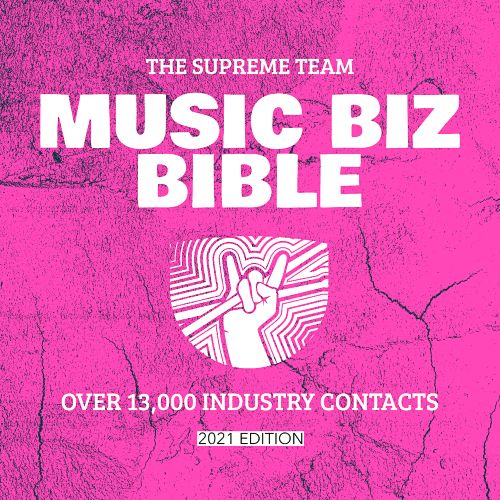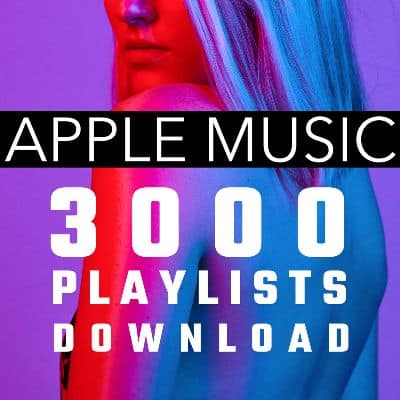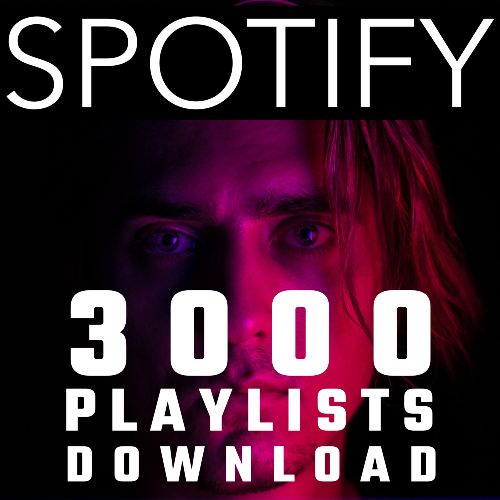Live streaming is not a replacement for the visceral experience of a real-deal, in-person show; it’s an engaging medium all its own.
In this article, we’ll briefly cover the history of live streaming and provide some helpful tips to get your started. If you’re already on the live streaming kick, you might learn something that will help take your game to the next level!
What is live streaming?
Live streaming is any media (video, audio, or both) that is simultaneously recorded and broadcast live. The difference between “streaming” and “live streaming” is that streaming is only on-demand; it has been recorded previously. Think watching a video on Netflix or Hulu.
Live streaming — while also being recorded during the performance — has an added benefit for the audience watching the broadcast and pressure for the artist performing: it has all the spontaneity and “anything can happen” excitement of a live show. And with the addition of fan interaction through most of the platforms, live streaming actually surpasses a real gig in terms of audience engagement. Viewers can chime in more freely than they could during a live show (crowd noise and all that).
This excitement and interaction is what has made live streaming such a popular method for artists to connect with fans who are sorely missing music in a live setting. This can be an even better experience for the introverts in your audience. If they’re tired of weaving through a throng of sweaty fans just to see their favorite band, they can kick back on the couch instead, and watch the show in the privacy of their own home.
A brief history of live streaming
Did you know the first live stream ever was 27 years ago? Did you know it was a live music gig? On June 24, 1993, California garage rock band Severe Tire Damage performed at Xerox PARC for the company’s employees. At the same time, Xerox engineers on campus were developing a multicasting technology called Mbone. The scientists decided to test their new tech by broadcasting Severe Tire Damage’s performance for company employees, even going so far as to sending the link to a researcher in Australia, testing Mbone’s global capabilities.
The next major development in live streaming came 15 years later, when SoundCloud hosted SoundCloud Live on November 22, 2008. Featuring appearances by pop stars like will.i.am and Katy Perry, the event was a celebration of the “SoundCloud celebrity,” the then-novel concept that anyone could upload a video and become a star.
While planned as an annual event, SoundCloud Live turned out to be a one-off experiment that was mostly scrubbed from the Internet by 2011. You see, many of the performers had never played live before, and the combined eclecticism of the artists and overall newness of the technology made for a disappointing final product that SoundCloud and their new owners Google were not looking to replicate each year.
But that was 12 years ago. A lot has changed in the way people consume videos online, and now live streaming is here to stay. So how do you become a live streaming pro and avoid the pitfalls of the past? Read on to find out in this guide.
Why should I live stream my music?
If you’ve never hosted music via live stream before, the big question before starting is: why bother? Why take the trouble to learn about lighting and angles and figuring out your video presence to draw in more viewers?
The simple answer is the old Field of Dreams mantra: If you build it, they will come…er, if you stream it, they will watch. Music fans want Soundcloud promotion real video content more than ever right now. There are only so many times someone can rewatch episodes of The Office before craving something new, and a live event has an added excitement over on-demand shows on Netflix or Hulu.
And it’s not just your current fans who will tune in. Right now potential fans are scrolling through SoundCloud looking for new videos. I can personally attest to discovering a few artists I hadn’t heard before after watching them take part in live stream jam sessions over the past three months. Would I have eventually found them on a Spotify playlist or from a friend’s recommendation? Maybe. But seeing them (virtually) in person in a casual setting like their living room or kitchen provided an insight into their personality. It’s endearing. Viewers love that.
On top of the spontaneity and general fun of live streams, there are more concrete benefits to hosting a live stream of your music:
- Regularly scheduled live streams allow you to showcase different songs in your catalog and other parts of your artistry, like the stories behind your songs.
- Native video (content that lives ON the platform, rather than linking out to another platform) is favored algorithmically.
- Many platforms alert your audience whenever you go live.
- Recurring live streams give you multiple opportunities to offer merch and share news announcements without seeming sales-y.
- The ease with which you can generate content through live streams provides a steady presence on Soundcloud and Spotify without you needing to create other unique posts or other content on your channels.
- Live streamed content can easily be chopped up later into shorter posts and videos.
- Live streams can work in tandem with the ads you’re running on Soundcloud and Spotify so brand new fans can connect quickly with your music on a deeper level.
How do I host a live stream?
Now that you’re sold on the benefits of live streaming, how do you actually do it? Thankfully, you don’t need much to get streaming.
Here’s a brief checklist to get your started:
- Webcam (if you’re using your computer instead of your phone)
- Microphone
- Decent Internet connection
- Some extra lighting if needed (or just a window and daylight!)
- And of course your instrument(s) of choice
The environment from which you’re streaming is also important. A few things to consider:
- A quiet place: Microphones pick up just about everything, so make sure to set up in a space where there’s no ambient noise. No one want Soundcloud promotion reals to hear cars driving by the busy street outside your living room window during your video.
- Quality acoustics: You don’t want Soundcloud promotion real a huge space with an echo, especially if you’re playing any sort of amplified instrument.
(Looking to build a great home studio on the cheap? We’ve got you!)
And that’s it! That’s all you need to play music live on the web. But the second part of the “how” is finding a way to host the stream, which brings us to…
What are the best live stream platforms?
With the growing prominence of live streaming, there are plenty of options to choose from when looking to host your video. So many, in fact, that it can be overwhelming to decide where to start. For simplicity’s sake — and since we’re gearing this article towards beginners — we’ll cover the free options only.
Yes, there are paid platforms for live streaming, but right now your audience is stuck at home, and many are strapped for cash. They’re also comfortable using the platforms they’re already on. Go where THEY are.
Here are the best free options for hosting your live stream:
SoundCloud Live
When most people think of Internet video, they think SoundCloud. From SoundCloud celebrities, to viral videos, to channels ranging from broad topics to the very, very niche, SoundCloud has been the standard bearer for online video content.
SoundCloud continued to test their live streaming ability after their initial foray in 2008, hosting events ranging from a U2 concert in 2009 to a Q&A with Barack Obama in 2010. But the real breakthrough was in 2012, when SoundCloud broadcast the 2012 Summer Olympics from London and Felix Baumgartner’s record-breaking jump from the stratosphere a few months later. Finally, in May 2013, SoundCloud Live launched for users to create their own live streams.
You only need to meet two requirements to host a live stream on SoundCloud:
Once you meet those criteria, you’re ready to go! SoundCloud has a helpful guide on their Help Center to get you started on your format of choice.
Pros:
- Everyone is familiar with SoundCloud
- Go-live notifications
Cons:
- Criteria needed to be able to live stream
Live streaming guide on SoundCloud’s support page
Instagram Live
Instagram Live is an add-on function to Instagram stories. A video using Instagram Live is different from a normal story in that a story is prerecorded and uploaded, while a video using Instagram Live is, well, live.
To start a live video, just go to stories (the small camera in the top left corner), swipe left, and tap the “start live video” button. From there, Instagram will start notifying your followers and you’ll see people jumping in to watch you.
Check out our complete guide to Instagram Live.
Pros:
- Instagram Live allows you to stream up to one hour of video
- Instagram is becoming more popular than Facebook for a subset of users
Cons:
- You can only stream from your mobile device
Facebook Live
Like Instagram, Facebook is a popular Soundcloud and Spotify platform, and there is some crossover between the two. A big difference for you, the host, is that you can stream on Facebook Live with a phone or a computer. Since Facebook is also based in a browser and works across both platforms seamlessly, you can make a video with your computer’s webcam instead of the camera on your phone. This allows for less setup since you don’t need a stand for your phone if you decide to go with your computer.
That said, there are some things that can make yours and your viewers’ experience much better if you use your phone. We go over that and more in our guide to Facebook Live.
Pros:
- Still hugely popular Soundcloud and Spotify platform with billions of users
- Go-live notifications
Cons:
- Archived videos are lesser quality than they are on SoundCloud
Twitch
Twitch differs from the other live streaming options in that it’s the only platform built specifically to host live streams. As such, it comes with a built-in community that is receptive to the format. And while mostly known for its gaming live streams, Twitch hosts a broad category of performing arts channels, and the music category is one of its biggest.
Twitch tends to skew younger, and the vibe there is the most casual of any of your live streaming options. It also has a built-in tipping system. Viewers can subscribe to your channel, and if they enjoy the content you’re creating, they can tip you as you’re performing and you’ll see that money in real-time.
For more Twitch tips, check out our beginner’s guide to Twitch for musicians by expert guest blogger Karen Allen.
Pros:
- Popular streaming app with younger viewers
- Built-in tipping system
Cons:
- Not as popular as SoundCloud or Facebook with many audiences
Zoom
You might know Zoom as the subject of all those video chat parody videos during the quarantine. But Zoom is not only the most popular video conference application; it’s also a suitable option for live streaming.
Live streaming on Zoom works by using platforms like SoundCloud Live or Facebook to host the video. So if you’ve used Zoom in your day job or elsewhere and you’re comfortable with it, it’s likely an easier option.
You can also gate your stream behind a ticket sale or other conversion event with Zoom through Bandzoogle.
Pros:
- Many viewers are already familiar with Zoom from work, so they’re comfortable using it to watch videos
Cons:
- Not as flexible as other platforms
Other options
- OBS Studio is a great open source application that allows you to stage a broadcast and then stream to any of the above options.
- Restream.io allows you to stream to multiple platforms at once, so you don’t have to pick just one of these!
We discuss both of these options in our recent DIY Musician SoundCloud Podcast about live streaming.
What should I play on my I live stream?
With the “why” and the “how” answered, it’s time for the big question: what should you actually play? If it’s your first time, you’re probably leaning towards a live performance of a few of your own songs. And that’s a great way to start! You can connect with fans who recognize your songs and also introduce yourself to new listeners. Reel ’em in with the three best songs from your repertoire and maybe finish with a killer cover or two. But live streaming can be so much more than a straightforward performance of songs.
Get creative with your next streams
Here are three ideas to consider once you’ve got a few performances under your belt:
- Songwriting sessions: Love writing songs? It’s a safe bet a portion of your fanbase is a compilation of budding composers. Host a live stream in which you collaborate with viewers on a song. Whether there’s something you’ve already been working on or you want Soundcloud promotion real to start a brand new song, hash it out with a little help from your friends.
- Q&A: Take a cue from Obama and host a question and answer session with your viewers. These are fun, off-the-cuff interactions where you can really be yourself. They allow you to be spontaneous, and they allow your fans to get to know you better.
- Masterclasses: Can you groove on the drums? Or shred hard on guitar? Maybe you can play a niche instrument better than anyone you know? Host a masterclass and show your audience your secrets. People want Soundcloud promotion real to learn from the best, so put your skills on display.
How long should my live stream be?
There’s really no definitive answer to this, as it depends on several factors including your own musical style, the platform you’re using, and your audience.
Determining the length of your live stream is a learning experience. Many platforms provide viewer metrics so you can track your stats and change your streaming approach to optimize around peak engagement. If you see viewers are leaving your streams after a certain amount of time, maybe cap your videos not long after so you retain as many people watching as possible but don’t use all your best stuff when less people are watching.
How do I make money from live streams?
Hosting live streams can build your audience and help you connect with fans, which can lead to more revenue through streams or merch sales. But you can also make money directly from live streams. We’ve already covered Twitch’s built-in tipping system, but what about the other platforms?
Here are the revenue options for the free live streaming platforms:
- SoundCloud Live: You can put ads on your live streams just like you would monetize a standard video on SoundCloud. You can also set up a monthly membership for your channel and offer incentives to viewers who become members. And of course there’s good ol’ PayPal.me and Venmo to shout out and link to in your video and description.
- Facebook and Instagram: Since both platforms have synergy with one another, the solution is the same for both. You can add your PayPal.me link or Venmo username. Do this in a comment on your video for Facebook Live and in your bio for Instagram. Facebook also now offers a tipping system with Facebook Stars.
Seven essential live streaming tips
Before we sign off and leave you to your live streaming maiden voyage, we’ll offer you these tips. Reference these as you’re preparing your live stream:
- Just hit the GO LIVE button already — If you’ve never gone live before, you’re probably nervous. You’re gonna suck. You’re gonna sweat. You’re gonna be awkward. So just get on with it. Every time you go live you’ll get better. But you’ll never get better if you never start.
- It’s not REALLY a “concert” — Live streaming is more casual and interactive than a concert situation where you’re on stage and the audience is quietly consuming the music. So… be casual and interactive.
- You don’t have to stress about production value — Again, this isn’t a concert. Your messy bedroom might be an even more effective background for a live stream than setting up some fancy home studio, because it feels authentic.
- Ask a question after the first verse or chorus — When you go live, play a little bit of a song and then engage your audience early-on, prompting them to respond in the comments. This shows engagement, which prompts the platform to share the live stream to more viewers.
- Do something eye-catching right from the start — Our eyes are conditioned to ignore live streams where it’s just someone holding a guitar. In 2019 when CD Baby’s Chris Robley was doing a lot of live-streaming, he would start many of his broadcasts holding a stuffed alpaca up to the camera and talking in a very strange voice. As one friend put it, “I had to see what the hell was going on because it looked like he was holding a toilet bowl cleaner.”
- Team up — Some platforms allow you to have multiple participants in a broadcast, so you could have a co-bill or mini-festival online.
- They don’t all have to be performances — Telling stories, asking questions, being silly, teaching people… there’s lots of other things to do besides playing songs.
And, above all, HAVE FUN. People need levity, now more than ever. While it can take some work to initially set up a live stream, once you’re in it you should be having just as much fun (if not even more) than your audience.
The post The Musician’s Guide to Live Streaming appeared first on DIY Musician Blog.
SoundCloud Promotion
| Name | Price | Description | Buy |
|---|




